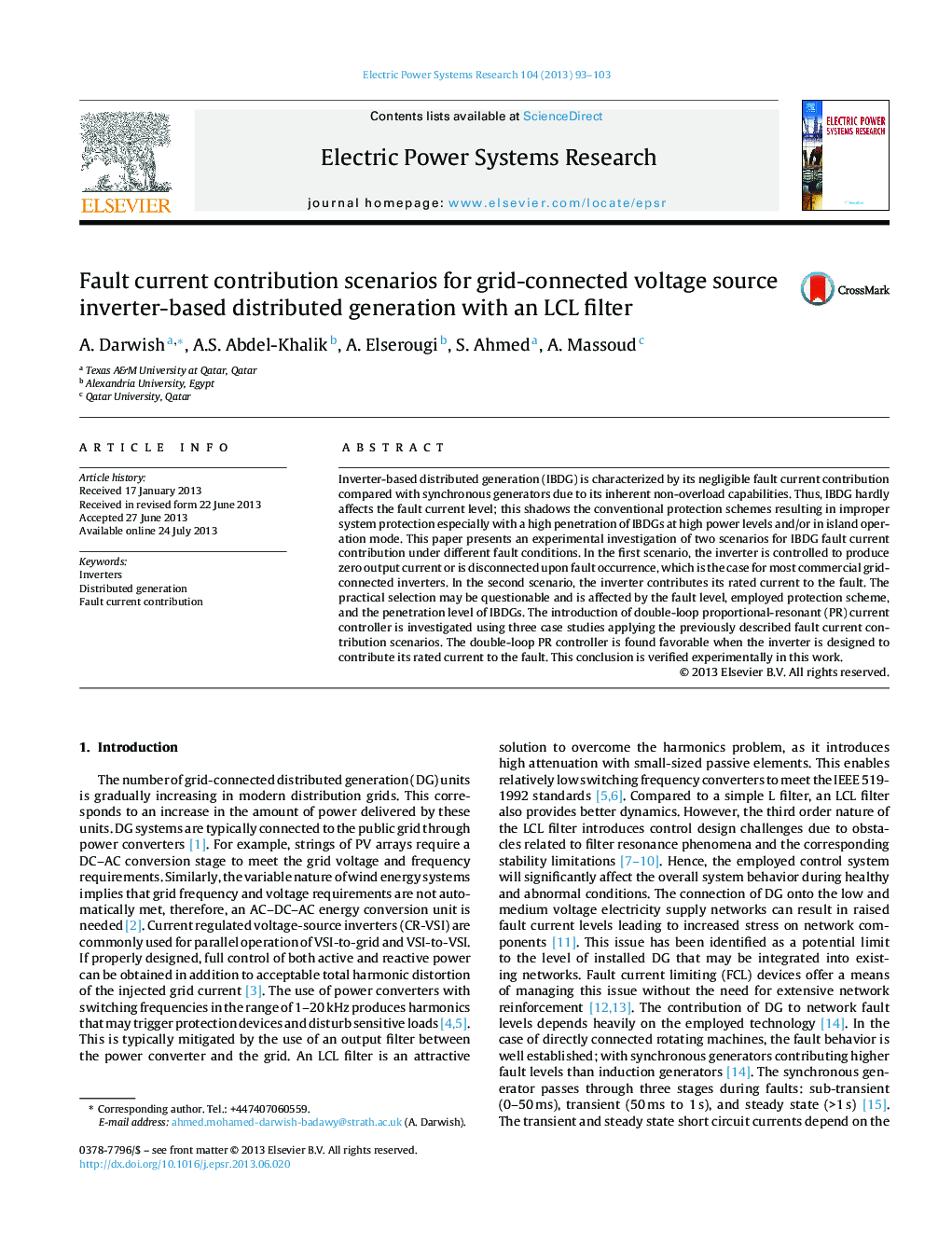| کد مقاله | کد نشریه | سال انتشار | مقاله انگلیسی | نسخه تمام متن |
|---|---|---|---|---|
| 704887 | 1644970 | 2013 | 11 صفحه PDF | دانلود رایگان |

• We studied the performance of single loop control of the Inverter Based Distributed generators at faults, we found it not stable.
• We made a Matlab model to study how the different fault current generated by the IBDG affect the power system protection.
• We proposed with mathematical analysis an additional control loop to solve the problems at faults.
• We built the necessary experimental setup using two voltage source inverters connected to the grid.
• The results of the proposed method are presented.
Inverter-based distributed generation (IBDG) is characterized by its negligible fault current contribution compared with synchronous generators due to its inherent non-overload capabilities. Thus, IBDG hardly affects the fault current level; this shadows the conventional protection schemes resulting in improper system protection especially with a high penetration of IBDGs at high power levels and/or in island operation mode. This paper presents an experimental investigation of two scenarios for IBDG fault current contribution under different fault conditions. In the first scenario, the inverter is controlled to produce zero output current or is disconnected upon fault occurrence, which is the case for most commercial grid-connected inverters. In the second scenario, the inverter contributes its rated current to the fault. The practical selection may be questionable and is affected by the fault level, employed protection scheme, and the penetration level of IBDGs. The introduction of double-loop proportional-resonant (PR) current controller is investigated using three case studies applying the previously described fault current contribution scenarios. The double-loop PR controller is found favorable when the inverter is designed to contribute its rated current to the fault. This conclusion is verified experimentally in this work.
Journal: Electric Power Systems Research - Volume 104, November 2013, Pages 93–103